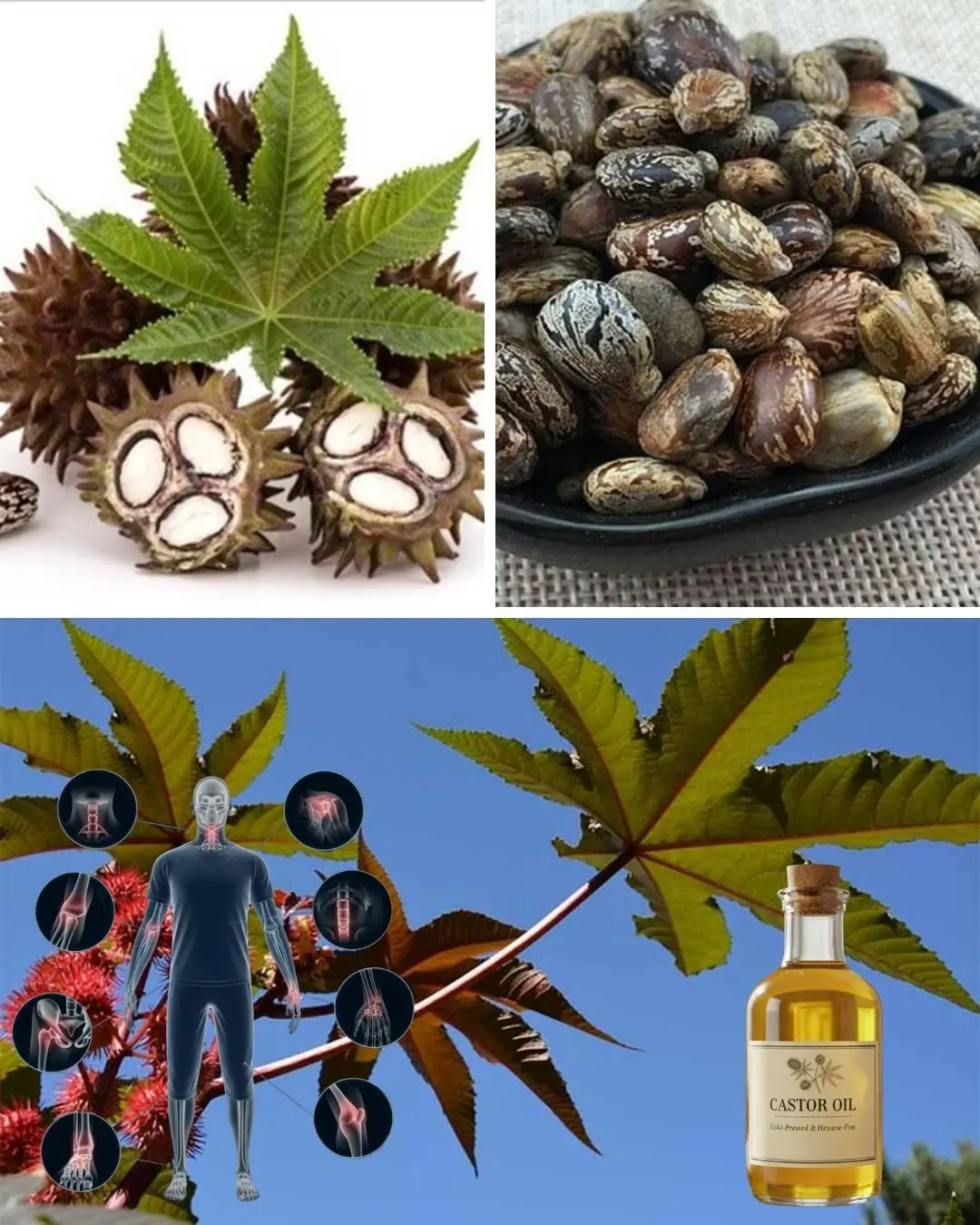
Similar To Opium: The Best Natural Painkiller That Grows In Your Backyard
If someone told you that lettuce could ease your pain just as effectively as opium, you'd probably think you misheard them. However, surprisingly, this claim is true. There is a particular strain of lettuce that looks like a mix between a dandelion and a thistle, and it has been used for centuries as a natural painkiller.
This plant, known as wild lettuce (Lactuca virosa), has earned nicknames like "poor man's opium" and "lettuce opium" due to its powerful pain-relieving properties. It has been used for centuries in folk medicine and is often considered a natural alternative to opium.
The plant’s bitter white sap, which resembles milk, gave it its Latin name “lac,” meaning milk. This milky substance is rich in sesquiterpene lactones, which are the active compounds responsible for the plant's opiate-like and pain-relieving effects. One study found that a dose of 30 mg/kg of lactucopicrin (the primary compound in wild lettuce) is comparable to a 60 mg/kg dose of ibuprofen. This demonstrates how potent this natural remedy can be (1).
Wild Lettuce: A Pain-Relieving Superstar
The history of Lactuca virosa dates back to Ancient Greece. Around 430 BC, Hippocrates, the father of modern medicine, noted the opiate-like effects of its sap. Even the Egyptians used wild lettuce, believing it could boost libido due to its stimulating effects at higher doses (2).
By the 19th century, wild lettuce became an alternative to opium when supplies of the latter were low. During the U.S. Civil War, it was used in place of laudanum (a tincture of opium) to manage pain when other options were scarce (3). In fact, the Polish medical community did extensive research on wild lettuce in the 1800s. Doctors observed that while it had opioid-like effects, it didn’t carry the severe addictive properties of opium. Polish medical journals published studies indicating that lactucarium (the resinous sap from the plant) might be even more effective than opium in some cases, without the side effects (4).
By 1898, Lactuca virosa was included in the United States Pharmacopeia, and by 1911, it was listed in the British Pharmaceutical Codex (5, 6). However, by the 1940s, wild lettuce fell out of favor in mainstream medicine. But by the 1970s, it gained popularity among countercultures like the "hippie" movement, who used it as a legal alternative to other psychoactive substances, sometimes combining it with catnip or damiana.
Today, wild lettuce is still used in various forms as a legal, non-prescription remedy. People often smoke it or heat it to inhale the vapors for a mild, relaxing effect.
Legal Status of Wild Lettuce
Currently, Lactuca virosa is considered an unscheduled substance by the U.S. Food and Drug Administration (FDA). This means it can be legally grown, purchased, and possessed without a prescription or license, unlike many controlled substances.
Despite its remarkable pain-relieving and mild psychoactive properties, wild lettuce is also celebrated for its broader range of healing benefits. Here's a closer look at what this fascinating plant can do:
Additional Benefits of Wild Lettuce
-
Alleviating Anxiety
Wild lettuce is well-known for its calming effects, especially for those suffering from restlessness or anxiety. It has been particularly effective in helping teenagers with anxiety issues, and some sources even suggest it can help with conditions like restless legs syndrome (7). -
Mild Diuretic Effects
Wild lettuce promotes urine production, making it beneficial for urinary tract infections and edema (a condition where excess fluid accumulates in tissues, causing swelling). This diuretic effect can help reduce bloating and discomfort associated with these conditions (8). -
Sleep Aid for Insomnia
Known for its sedative properties, wild lettuce is effective in treating insomnia and other sleep disorders. When combined with other herbs like valerian root, it can have an enhanced tranquilizing effect, making it an ideal natural remedy for poor sleep (9). -
Easing Arthritis Pain
Wild lettuce’s analgesic properties extend to relieving joint and muscle pain, making it helpful for those suffering from arthritis. Consuming wild lettuce tea before bed can ease sore muscles and joints while also promoting a restful night’s sleep (10). -
Migraine Relief
If you suffer from migraines, wild lettuce may help reduce both the frequency and severity of headaches. Using it in tincture form is especially effective in managing migraine symptoms (11). -
Treating Coughs and Asthma
Wild lettuce has expectorant qualities that make it helpful for easing bronchitis, asthma, and dry, irritating coughs. It works by helping to loosen and expel phlegm from the respiratory tract, providing relief from respiratory discomfort (12).
How to Use Wild Lettuce
You can find wild lettuce in various forms, including tea, tinctures, and supplements. Some people also dry the leaves and smoke them, although this method is not widely recommended due to potential respiratory risks.
Here’s how you can use wild lettuce for different ailments:
-
For Pain: Infuse 1.5 grams of wild lettuce sap in tea.
-
For Smoking: 0.25 grams of dried wild lettuce leaves can be smoked, as this method is far more potent.
-
In Supplement Form: Take 30 to 120 milligrams before bed to aid with sleep or pain relief.
-
Tincture for Anxiety: Use 12-24 drops daily for acute stress and anxiety.
-
For Insomnia: Take 12-24 drops every 15 minutes for 1 or 2 hours before bedtime.
Conclusion
While wild lettuce is not a substitute for modern medications, it certainly offers an intriguing natural alternative for managing pain, anxiety, insomnia, and more. With a long history of use dating back to ancient civilizations, it remains a valuable plant for its medicinal properties today. So, the next time you come across a patch of Lactuca virosa, you might want to think twice before dismissing it as just another weed.
News in the same category


Chicken Egg, Garlic, and Honey — You’ll Thank Me for This Simple Recipe

This Syrup Will Stop a Cough Dead in its Tracks – Ginger Thyme Cough Syrup

Take just 1 a day for strong bones, pain-free joints & osteoporosis protection!

World’s deadliest cancer: 8 early warning signs every older adult should know

Eat okra every day? Here’s what happens to your body!

Holy basil shown to cut stress hormone cortisol by 36% in 40 minutes

These 14 Foods Will Improve Your Kidneys’ Ability To Detox Like Never Before!

The Best Foods to Cleanse and Prevent Clogged Arteries

This Plant Is More Than Just a Kitchen Herb — It’s One of the Most Powerful on Earth

The surprising vitamin that helps break down leg clots—are you getting enough?

Why Your Hard-Boiled Eggs Have That Weird Green Ring

The shocking truth about vitamins and blood clots in your legs

Doctors Reveal That Consuming Pineapple Causes Remarkable Health Benefits

These 4 common prescription drugs may be silently damaging your nerves

🍎 Beet & Citrus Juice: A Nutritious Drink Packed With Antioxidants (Not a ‘Cleanse’)

The #1 fastest way to reverse liver and kidney damage

Humans are still evolving, and we’re losing our teeth

Numbness Or Tingling Sensations In Your Hands
News Post

Who Will Not Be Eligible As Trump Promises To Give $2,000 To Almost Everyone In America

The Hidden Health Benefits of Bananas for Women

‘I Know That Unequivocally Is Not True’: Stephen A. Told Cari Champion I Made You Why Would I Play You, But Jemele Hill Says It Wasn’t Like That

‘This Is Nick’s Fault’: Nick Cannon Accused of Creating Broken Homes After His and Mariah’s Daughter Shares Raw Post About Her 10 Siblings

‘Beans and Weenies in My Mansion?’: Tiny Harris Reaches Her Limit After T.I. Exposes Son King’s ‘Struggle’ Habits at Family Party

Why Did Patti LaBelle Cash In Her Entire Music Catalog? Inside the Superstar’s Royalty Deal

‘Next Child Will Be From Michael Jordan’: As Cardi B and Stefon Diggs Announce New Baby, Fans and Foes Can’t Deny She’s A Legendary Shot Caller

Stainless steel pots that are yellow or blackened should be soaked in this water and they will shine like new

Kelsey Grammer’s Daughter Reveals the Moment She Ran Away From Him — and the Christmas Encounter That Changed Everything

Aloe vera and vitamin E combo: From giving you glass skin to nourishing your hair like a pro

Chicken Egg, Garlic, and Honey — You’ll Thank Me for This Simple Recipe

She Fired Them for Having an Affair — Now the CEO Defends Her Decision and Sparks Chaos Online

Holding Cloves in Your Mouth: A Natural Way to Relieve Toothache

7 Benefits and Uses of Castor Oil

Prince William’s Surprise Message Leaves Sara Cox in Tears — ‘The Nation’s So Proud of You

This Syrup Will Stop a Cough Dead in its Tracks – Ginger Thyme Cough Syrup

Take just 1 a day for strong bones, pain-free joints & osteoporosis protection!

What Did George, Charlotte and Louis Make for King Charles’ Birthday? Insiders Hint at Something ‘Extra Special’
